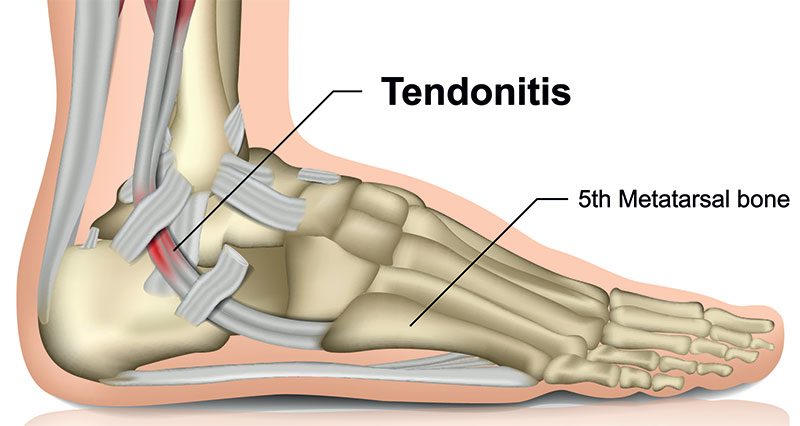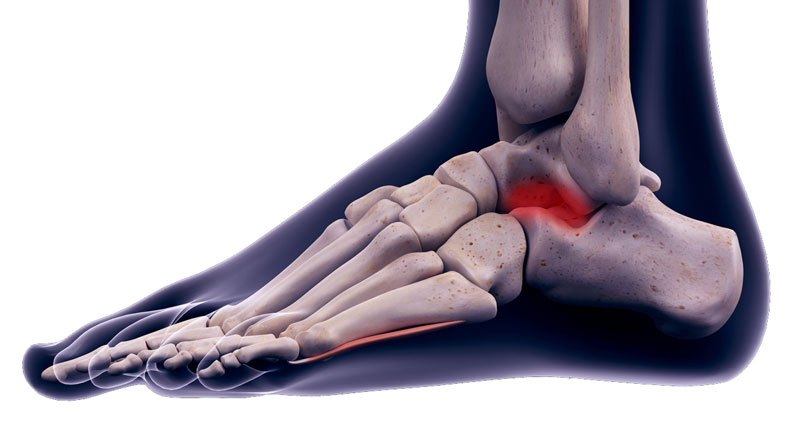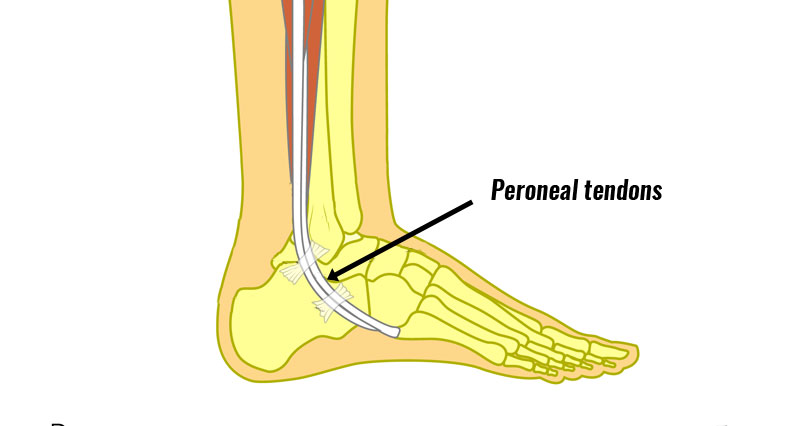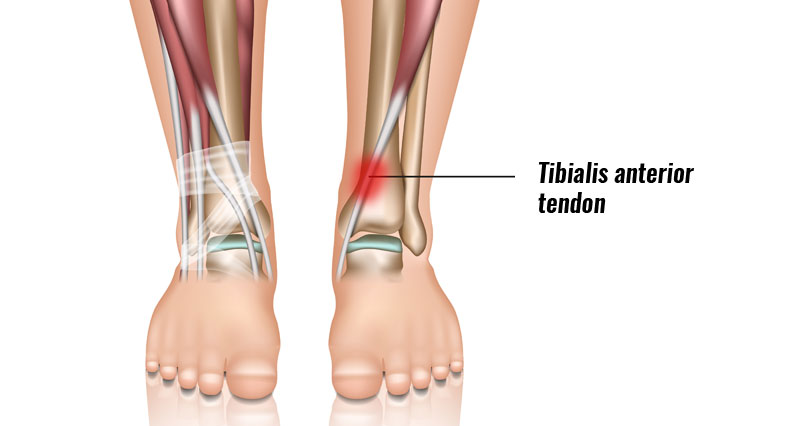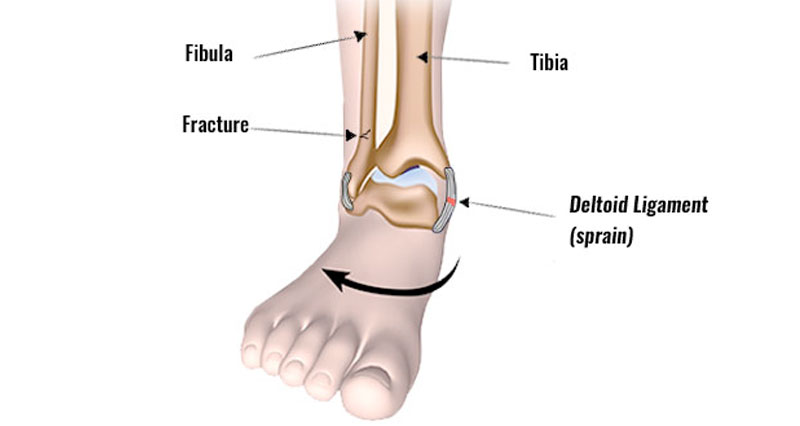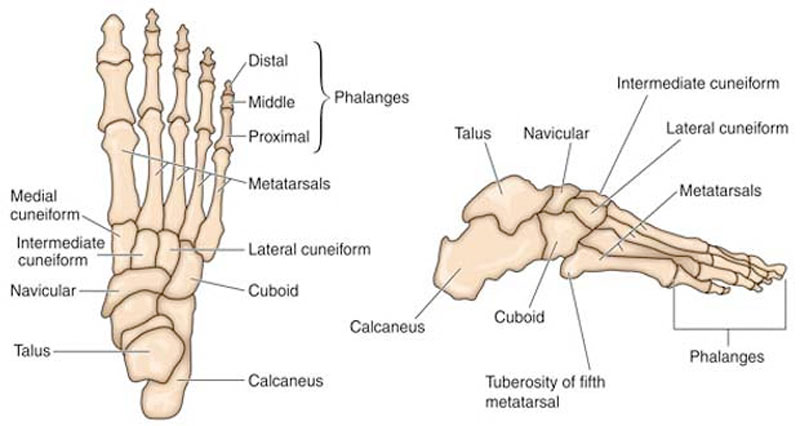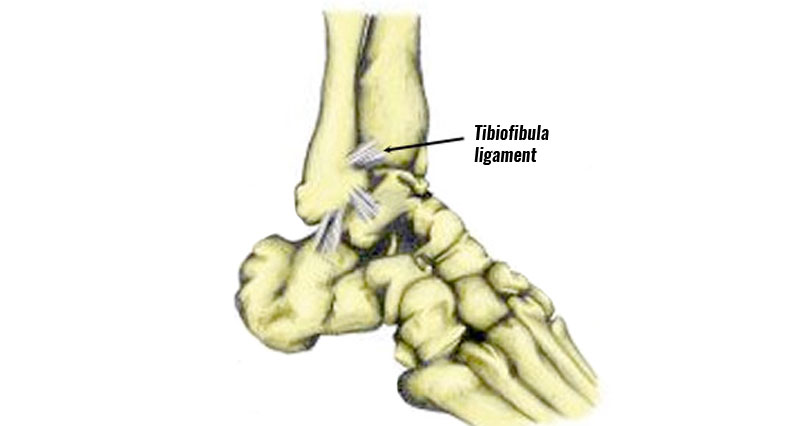Peroneal tendonitis is an overuse injury causing pain on the outside of the ankle. Over time, the peroneal tendon rubs on the bone leading to inflammation and eventually degeneration of the tendon. Here we explain the symptoms, causes, and treatment for peroneal tendonitis.
Peroneal Tendonitis Symptoms
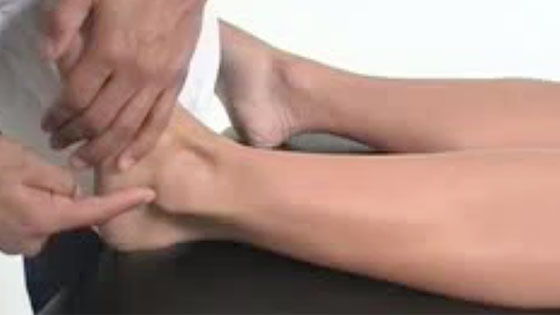
Symptoms of Peroneal tendonitis/tendinopathy include:
- Pain and swelling on the outside of the ankle, just below the lateral malleolus
- Pain is often worse during activity, but improves with rest
- Tenderness when pressing in on the outside of the ankle
- Increased pain when stretching the peroneal muscles
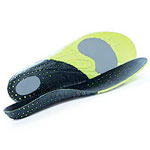
Arch Support Insoles
Diagnosis
A professional therapist may perform a number of tests to help diagnose your injury.
- Passive inversion – this involves stretching the muscle. They invert the foot by turning it inwards. Pain indicates a positive result.
- Resisted eversion – this involves resisting your foot as you attempt to straighten it from an inverted position. Again, pain indicates a positive result.
Imaging
An MRI or ultrasound imaging scan helps confirm the diagnosis.
What is Peroneal Tendonitis?
Peroneal tendonitis is inflammation or degeneration of the peroneal tendons on the outside of the ankle.

Anatomy
The Peroneal muscles consist of the Peroneus longus and Peroneus brevis. They are located at the back & outside of the lower leg.
The peroneal tendons pass down the back and underneath the lateral malleolus (bony bit on the outside of the ankle). Overuse causes the peroneal tendons to rub on the bone and as a result, become inflamed.
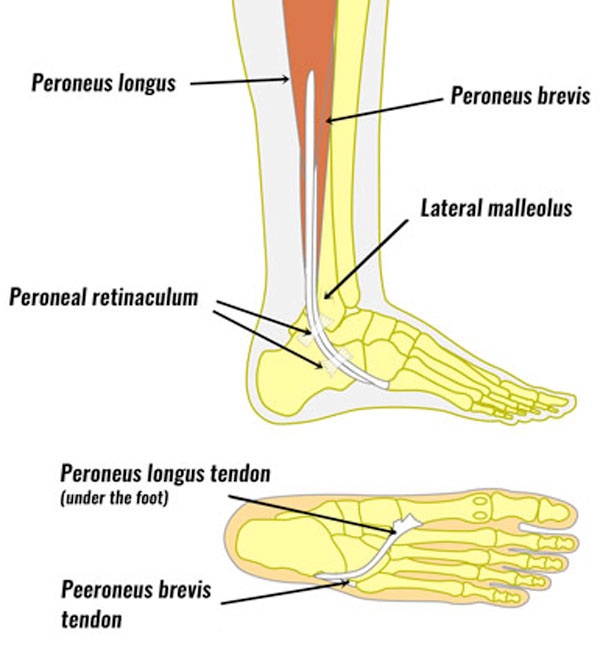
The peroneus longus tendon runs around the back of the lateral malleolus and under the foot. It attaches to the outside of the first metatarsal and cuneiform bones.
The peroneus brevis also passes around the back of the lateral malleolus. It attaches to the outside of the foot at the base of the 5th metatarsal. The muscles plantarflex (point downwards) and evert (turn outwards) the foot.
Tendonitis or tendinopathy?
The term Peroneal tendinopathy rather than Peroneal tendonitis may be more appropriate, especially in chronic cases. This is because tendinopathy describes degeneration of the tendon as opposed to just acute inflammation. If your injury is quite recent, for example, a few days old, then you may have acute inflammation (tendonitis).
However, in chronic cases, acute inflammatory cells are unlikely to be present. Therefore, degeneration (tendinopathy) of the tendon is a more accurate description.
What causes Peroneal tendinopathy?
Overuse is the primary cause, however, there are a number of factors that can increase your risk of injury.
Road running
Running along slopes, for example at the side of a road causes your foot to roll out more. This increases tension in the peroneal tendon making you more susceptible1.
Poor flexibility
Tight calf muscles will increase the tension in the peroneal tendon, causing it to rub more.
Overtraining
Overtraining is also a contributory factor, particularly in dancers or basketball players.
Foot biomechanics
Biomechanical factors such as overpronation, or over supination are factors, increasing friction between your tendon and ankle bone.
Peroneal Tendonitis Treatment
Rest
Rest is important when treating peroneal tendonitis. As it is an overuse injury, continuing to train prevents healing.
However, it may be possible to do other activities such as swimming or cycling to maintain fitness. The rule is if it hurts during, immediately after, or the following day, then don’t do it!
Cold therapy
Apply the PRICE principles (protection, rest, ice, compression, and elevation). This will help reduce swelling, pain, and inflammation. Ice or cold therapy can be applied for 10 minutes every hour, to begin with, reducing frequency as your symptoms improve.
Supports & braces
Wear a specialist peroneal tendonitis brace to protect and support your ankle. If your injury has passed the acute stage then a simple neoprene ankle wrap is ideal as it acts as a heat retainer.
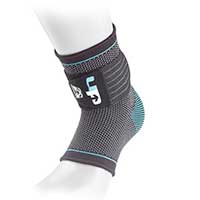
Buy Ankle Supports
Ankle taping for Peroneal tendonitis
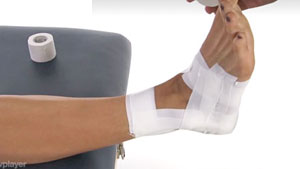
Tape your ankle. This provides a great deal of support and protection to the ankle. It can be done in the same way as an ankle sprain taping technique.
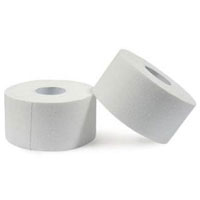
Zinc Ocide Sports Tape
Medication
A doctor may prescribe NSAIDs (non-steroidal anti-inflammatory drugs) to reduce pain and inflammation. Do not take Ibuprofen if you have Asthma.
Sports massage for Peroneal tendonitis
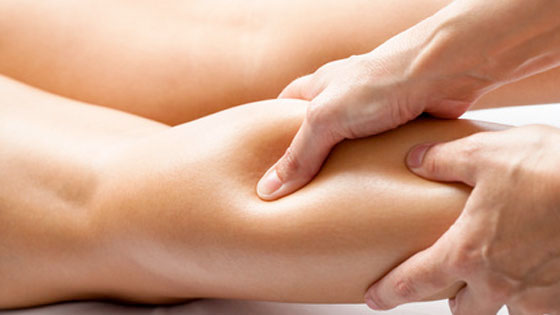
Deep tissue sports massage to the peroneal muscles can help to reduce tension in the muscle. As a result, the muscles relax, which in turn reduces the tension in the tendon. In severe cases, surgery may be required.
Massage techniques will be similar to those for a calf strain.
Peroneal Tendonitis exercises
Stretching your calf muscles and peroneal muscles is important. Tight peroneal muscles will increase the friction between the peroneal tendon and the bone. Gently stretching the muscles over time will reduce the tension in your muscle.
Peroneal muscle stretch
A specific stretch to target the Peroneal muscles is done by stretching your foot into an ‘inverted position’. This is more easily done in a sitting position.
Calf muscle stretches
If you simply rest without stretching or addressing the initial causes, the pain will go. However, it is likely to return once you resume normal training.
References & further reading
- Clarke HD, Kitaoka HB, Ehman RL. Peroneal tendon injuries. Foot Ankle Int 1998;19(5):280–8.
- Tjin ATER, Schweitzer ME, Karasick D. MR imaging of peroneal tendon disorders. AJR Am J Roentgenol 1997;168(1):135–40
